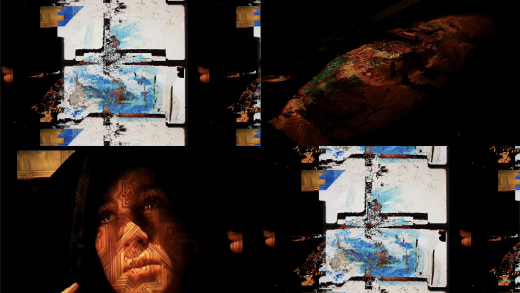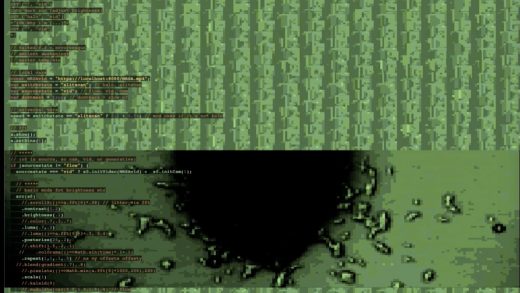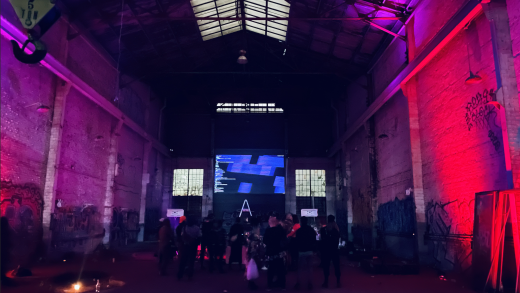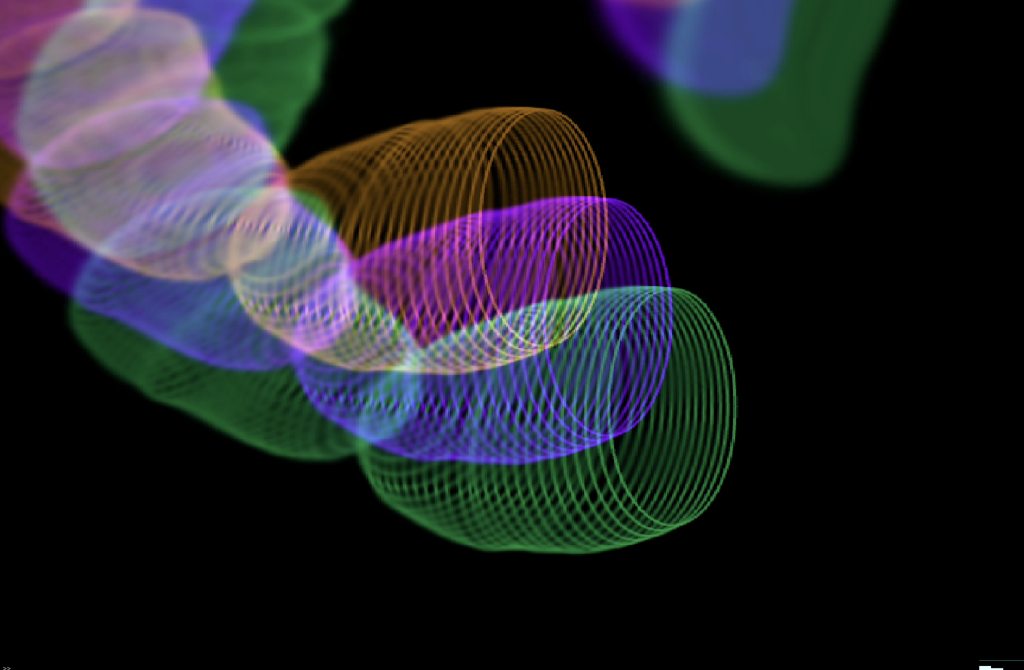
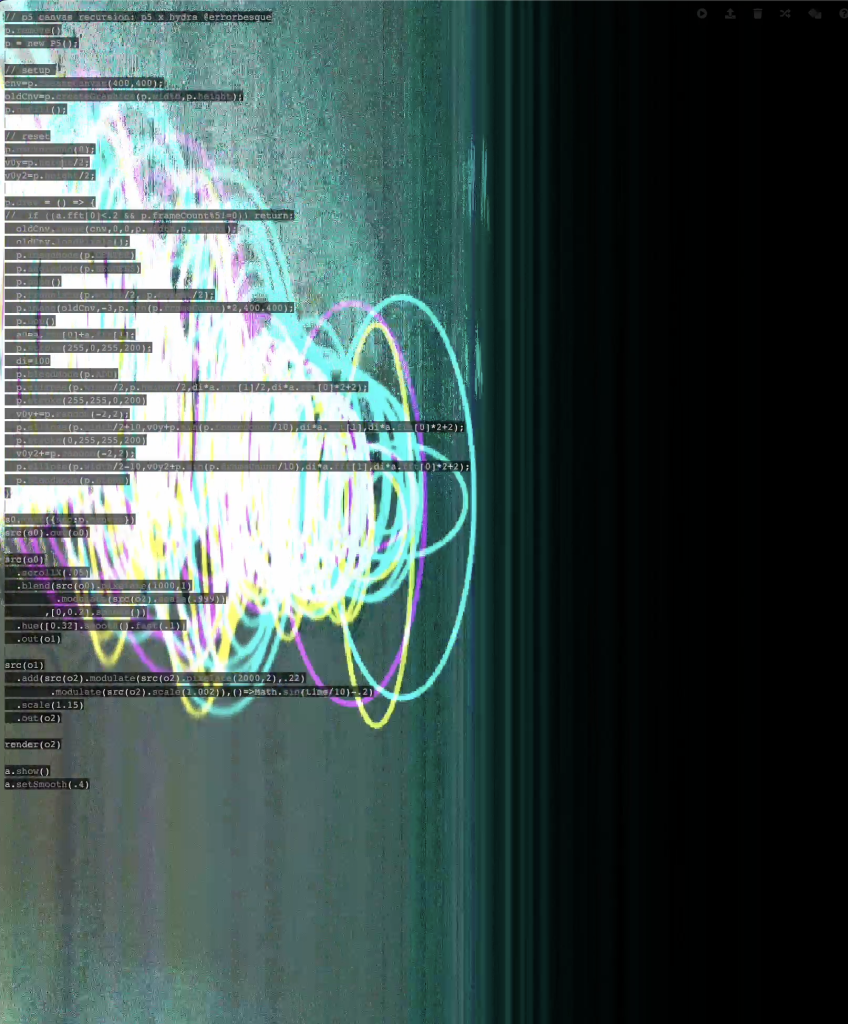
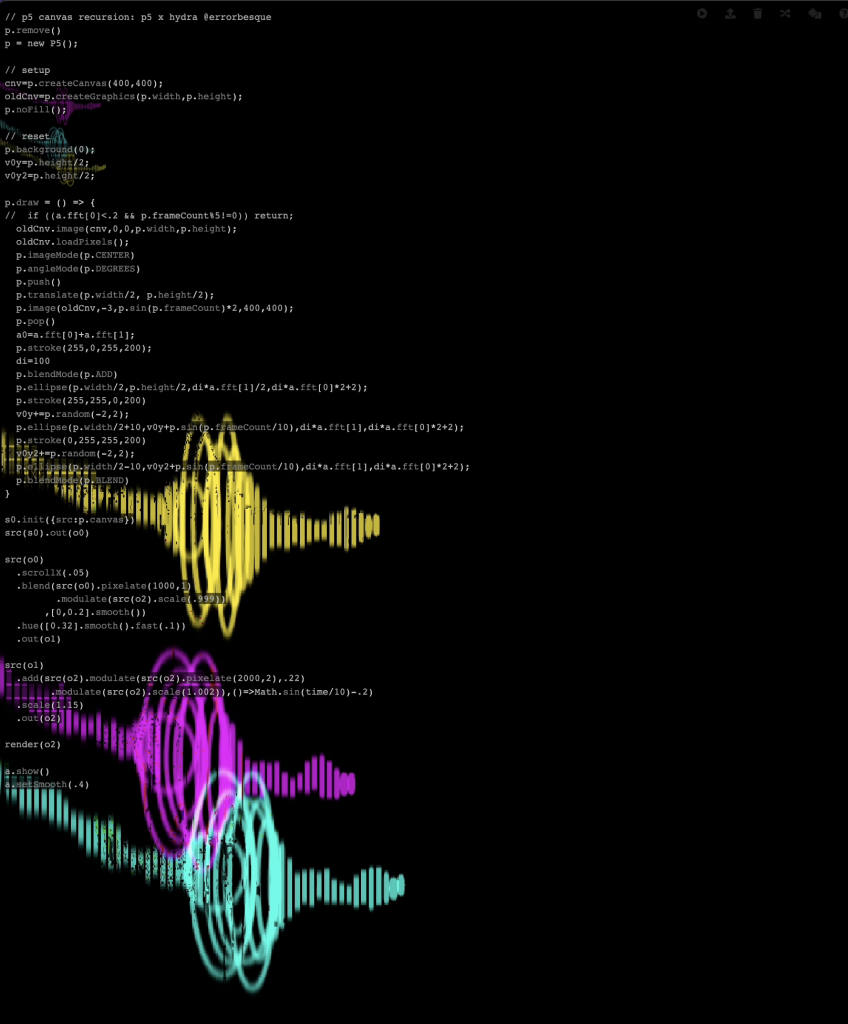
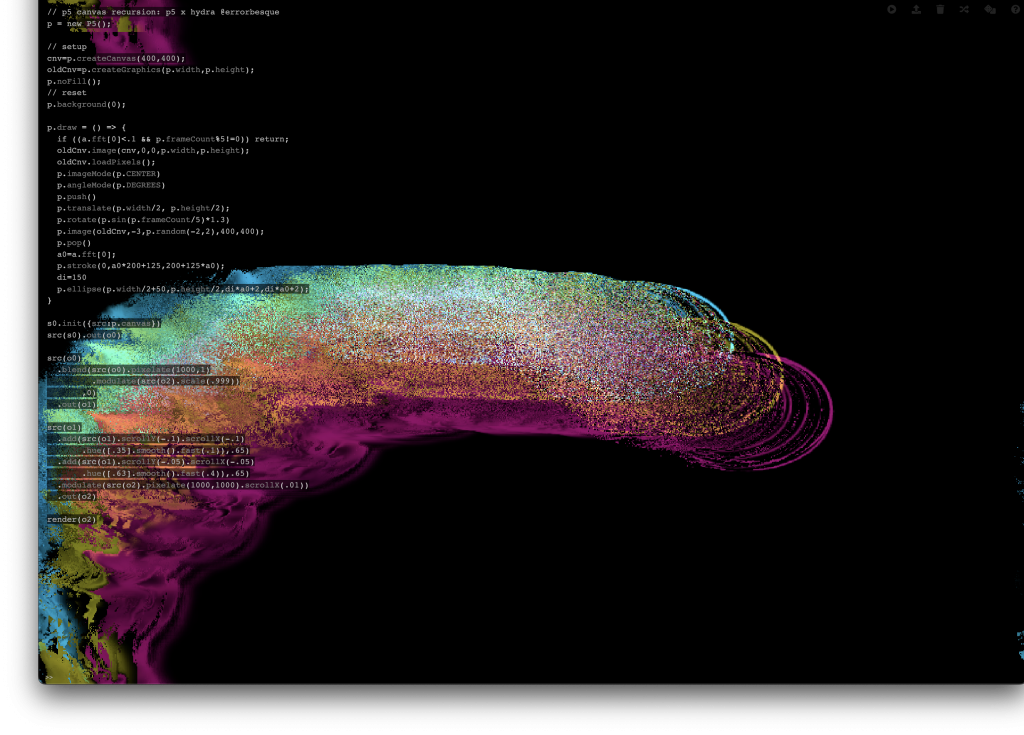
played more with p5 generation, this time looking at more fft bins than i normally do (usually just hit the lowest bin because it’s the most obviously correlative, but this viz shows very clear correlates to all bins)
// Fft ersatz 3d timeseries
// p5 canvas recursion: p5 x hydra @errorbesque
p.remove()
p = new P5();
// setup
cnv=p.createCanvas(400,400);
oldCnv=p.createGraphics(p.width,p.height);
p.noFill();
// reset
p.background(0);
v0y=p.height/2;
v0y2=p.height/2;
p.draw = () => {
if ((a.fft[0]<0.4 && p.frameCount%5!=0)) return;
oldCnv.image(cnv,0,0,p.width,p.height);
oldCnv.loadPixels();
p.imageMode(p.CENTER)
p.angleMode(p.DEGREES)
p.push()
p.translate(p.width/2, p.height/2);
p.image(oldCnv,-12,p.sin(p.frameCount)*2,400,400);
p.pop()
a0=a.fft[0]+a.fft[1];
p.stroke(255,0,255,200);
di=50
p.strokeWeight(2)
if(p.random(-1,1)>0) p.blendMode(p.ADD)
p.ellipse(p.width/2,p.height/2,
di*a.fft[1]/2,di*a.fft[0]*2+2);
p.stroke(255,255,0,200)
v0y+=p.random(-2,2);
p.ellipse(p.width/2+10,v0y+p.sin(p.frameCount/10),
di*a.fft[1],di*a.fft[0]*2+2);
p.stroke(0,255,255,200)
v0y2+=p.random(-2,2);
p.ellipse(p.width/2-10,v0y2+p.sin(p.frameCount/10),
di*a.fft[1],di*a.fft[0]*2+2);
p.blendMode(p.BLEND)
}
s0.init({src:p.canvas})
src(s0).out(o0)
src(o0)
.scrollX(.05)
.blend(src(o0).pixelate(1000,2)
.modulate(src(o2).scale(.999))
,()=>a.fft[2]/3)
.hue([0.32].smooth().fast(.1))
.out(o1)
src(o1)
.scrollX(-.1)
.scale(1.15)
.modulate(src(o2).scale(1.01)
.pixelate(1000,1000),0.0)
.out(o2)
render(o2)
a.show()
a.setSmooth(.4)